April 17 lecture
Asteroids
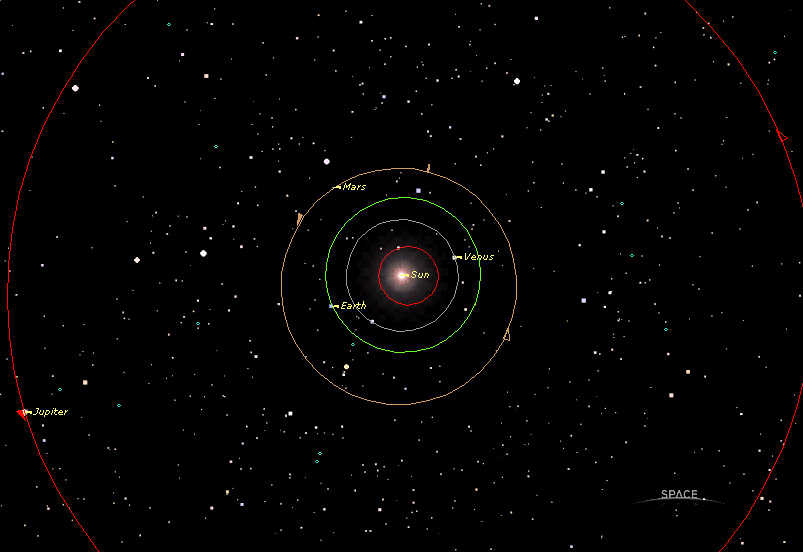
In the late 1700's a German
astronomer named Titius predicted that a planet should exist
between the orbits of Mars and Jupiter. On January 1, 1801 (the
very first day of the 19th century), Guiseppe Piazzi discovered
a new object that moved in relation to the background stars.
Further observations showed that this object was exactly where
the missing planet should be. Piazzi's object was named
Ceres. At this point the solar system had 8 planets (Neptune was
not discovered until 1846). A little over a year later, a second
object was discovered with an orbit very similar to Ceres'. This
second object was named Pallas. Now the solar system had 9
planets. By 1851 there were 15 known asteroids (asteroid means
"star-like;" because asteroids are so small, a small telescope
cannot resolve them as disks, so they appear like faint stars
that move slowly across the sky). These objects were unlike the
other planets that had been observed because they were very
small and they orbited relatively close to each other in
space. Astronomers decided to ``demote'' these smaller
objects from planet-status and call them ``minor planets''
(sound familiar?).
Astronomers initially believed the
asteroids were pieces of a planet that had somehow disintegrated,
but this is no longer considered the best explanation for their
existence.
Since then we have discovered
thousands of asteroids, ranging in size from 100s of kilometers
down to 10s of meters. Most asteroids in the solar system have
orbits around the sun which keep them between Mars and Jupiter.
The asteroid belt lies roughly 2-4 AU from the sun. The total
mass of the asteroids is 2.3e21 kg, roughly 2500 times less than
the mass of the Earth (and about 30 times less than the mass of
the Moon). Here is a diagram showing the Moon (grey
outline) compared with the ten biggest asteroids:
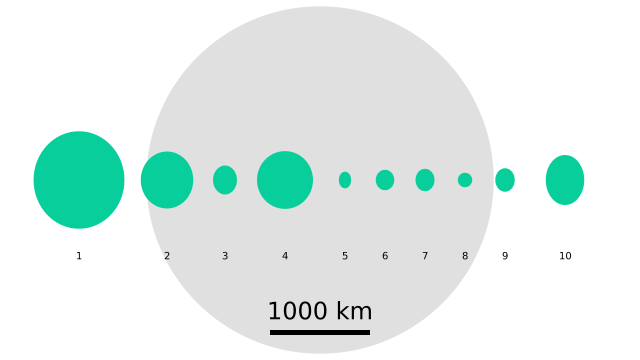
Planetary scientists now believe that the asteroids could have
formed another (very small) planet in the solar system, but
gravitational perturbations from Jupiter prevented the asteroids
from getting together. Thus, asteroids are leftover
planetesimals and represent the same material that went into
building the planets.
Orbits:
The important things to remember about
asteroid orbits are:
- They lie between the orbits of
Mars and Jupiter (mostly). Also notice the two swarms of
asteroids at Jupiter's L4 and L5 points. These are
called the Trojan asteroids.
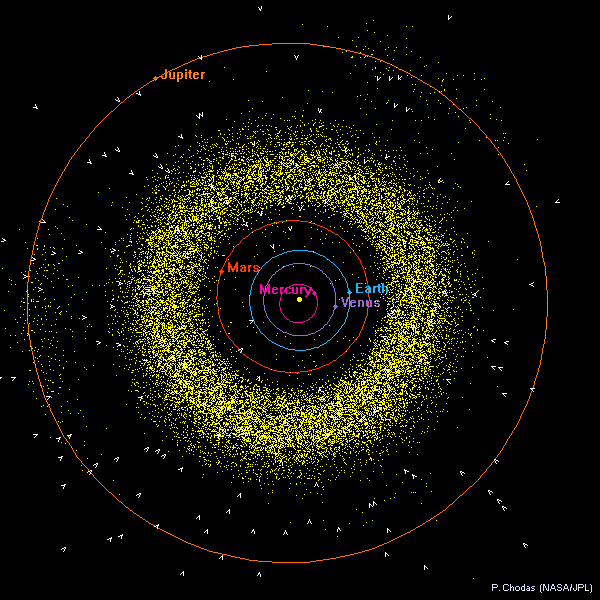
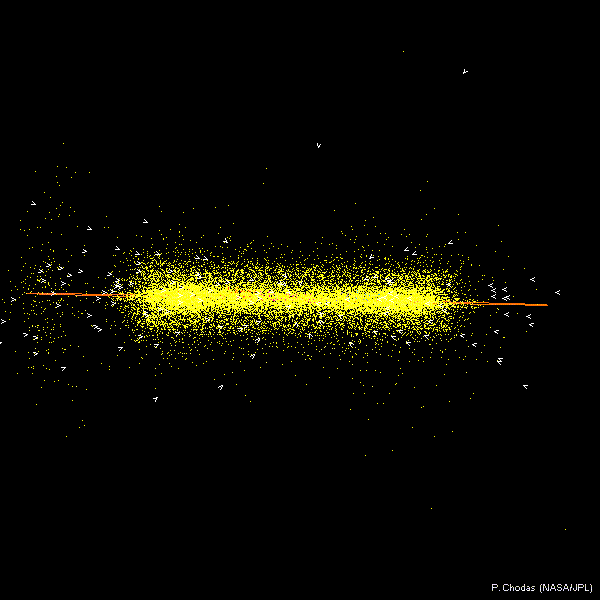
- Asteroids appear to be "zoned"
in composition: the darkest and most primitive ones lie
further from the Sun.
Asteroid orbits lie in a region
where there are many strong resonances with Jupiter and show
gaps at many resonances. These are called the Kirkwood gaps.
2:1 resonance movie
3:1 resonance movie
Location of Gaps
- Asteroid orbits have the
appearance of a "hot" disk, meaning they have relatively high
eccentricities and inclinations; therefore they continually
collide with each other.
Most meteorites come from
asteroids:
Meteorites (to be discussed in the next
lecture) are classified as: iron, stony-iron, and stony.
Meteorites are thought to originate from parent bodies analogous
to the main types of asteroids: undifferentiated, primitive bodies
and differentiated, altered asteroids. Primitive meteorites, such as the
carbonaceous chondrites, would likely come from an asteroid like
this:
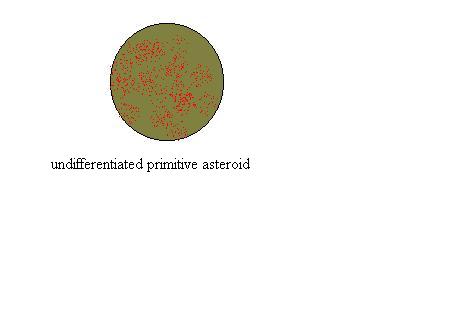
In contrast, iron and stony-iron
meteorites probably come from an asteroid that looks like this:
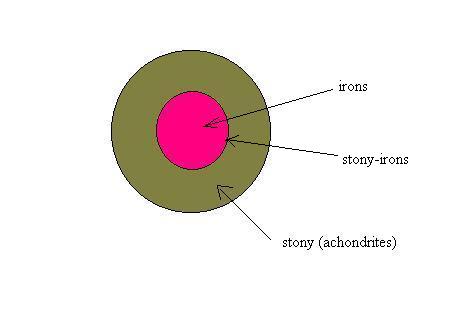
Asteroids Close Up
Recent spacecraft missions have
provided lots of information about the structure and make up of
asteroids. Here are some images of asteroids (plus a couple
of comets) taken by various spacecraft
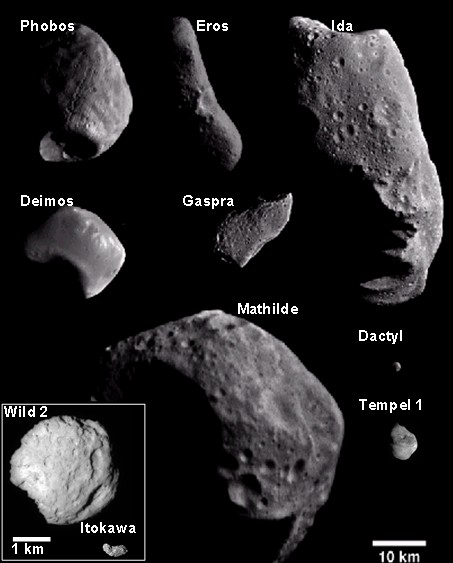
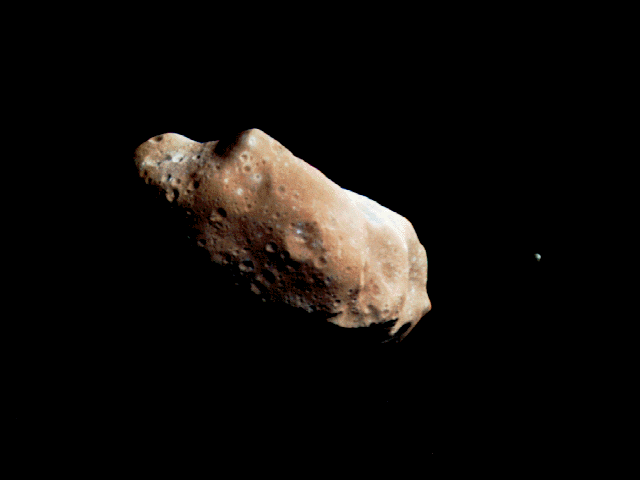
Most
asteroids are thought to be loosely consolidated piles of
rubble, as is evident in the image of asteroid Itokawa below.
Itokawa is a tiny asteroid, only 500 m across along its longest
dimension. It was visited by the Japanese spacecraft Hayabusa.
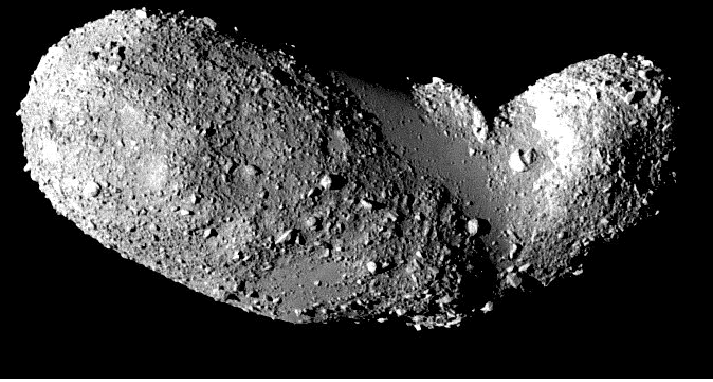
Take a look at information on Eros
obtained by the NEAR spacecraft, which
orbited and ultimately "landed" on asteroid 433 Eros.
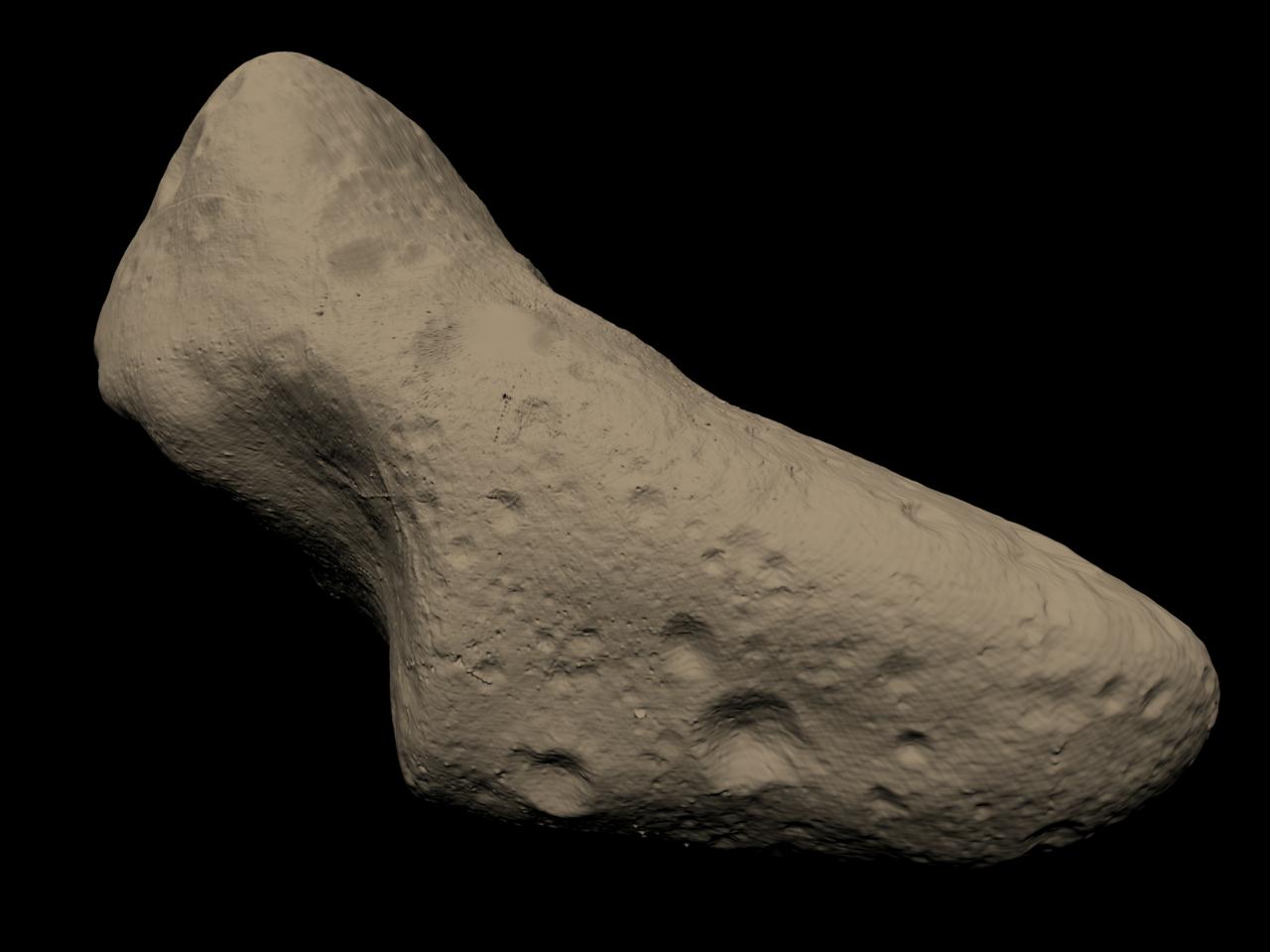
NASA
currently has a mission called Dawn on its way
to the asteroid belt. Dawn is a Discovery mission
(relatively low cost). It will use an ion-propulsion system to
visit and go into orbit around the two largest asteroids, 4
Vesta (in 2011) and 1 Ceres (in 2015).
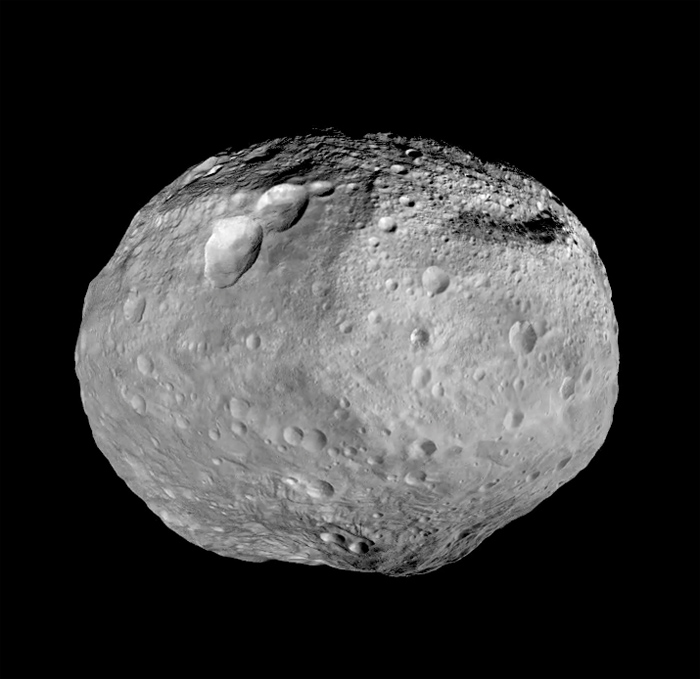
Image of
asteroid 4 Vesta from Dawn
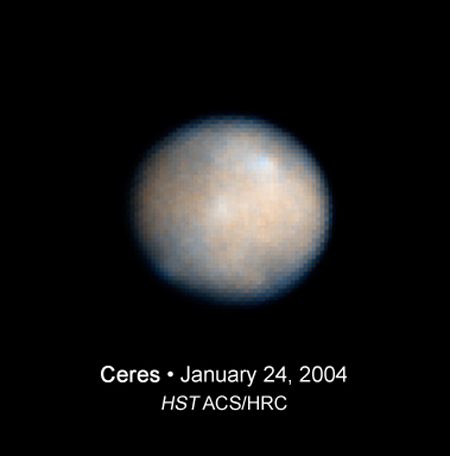
Hubble image
of asteroid 1 Ceres
Killer Asteroids?
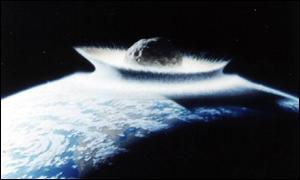
There is a nonzero risk of an asteroid
colliding with Earth some time in the future. However, other
risks appear to be larger, at least on the short term. See
the likelihood here.
To see how congested the solar
system in the area around the Earth is, check out:
Animations
from the Minor Planet Center
Figures
from Armagh Observatory
Different problems arise, depending
on whether the asteroid crashes into land or water. So what can
be done? This is still an area of research and debate. Blowing
up a potential impactor as illustrated in Armageddon (bad,
bad,
bad movie) probably is not the best idea.
We may be able to "nudge" it with different types of bombs, to
push it into a non-threatening orbit may or maybe nothing will
really work. The feasibility of the different strategies that
have been proposed depends strongly on how early we detect the
impactor.












